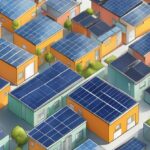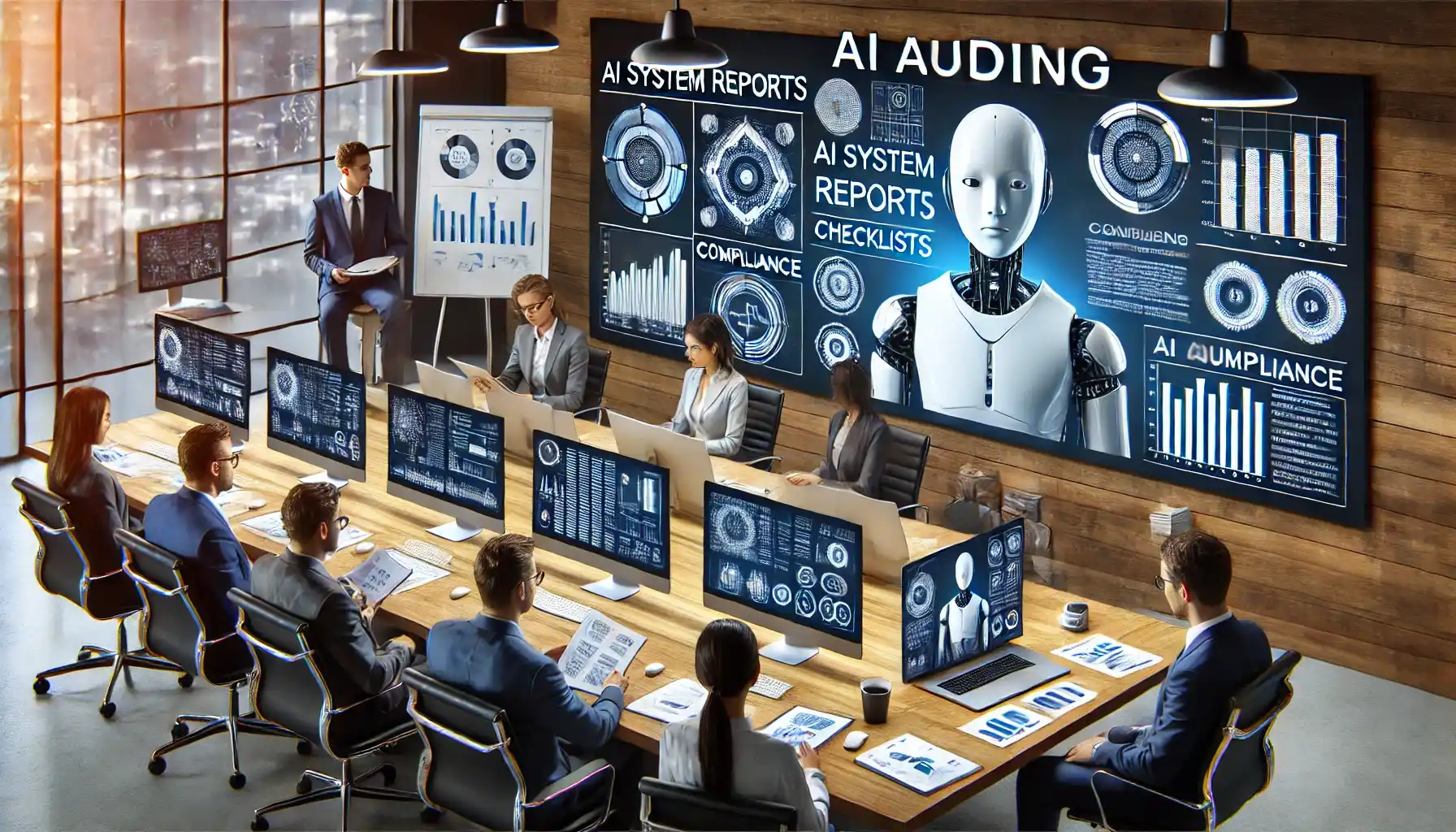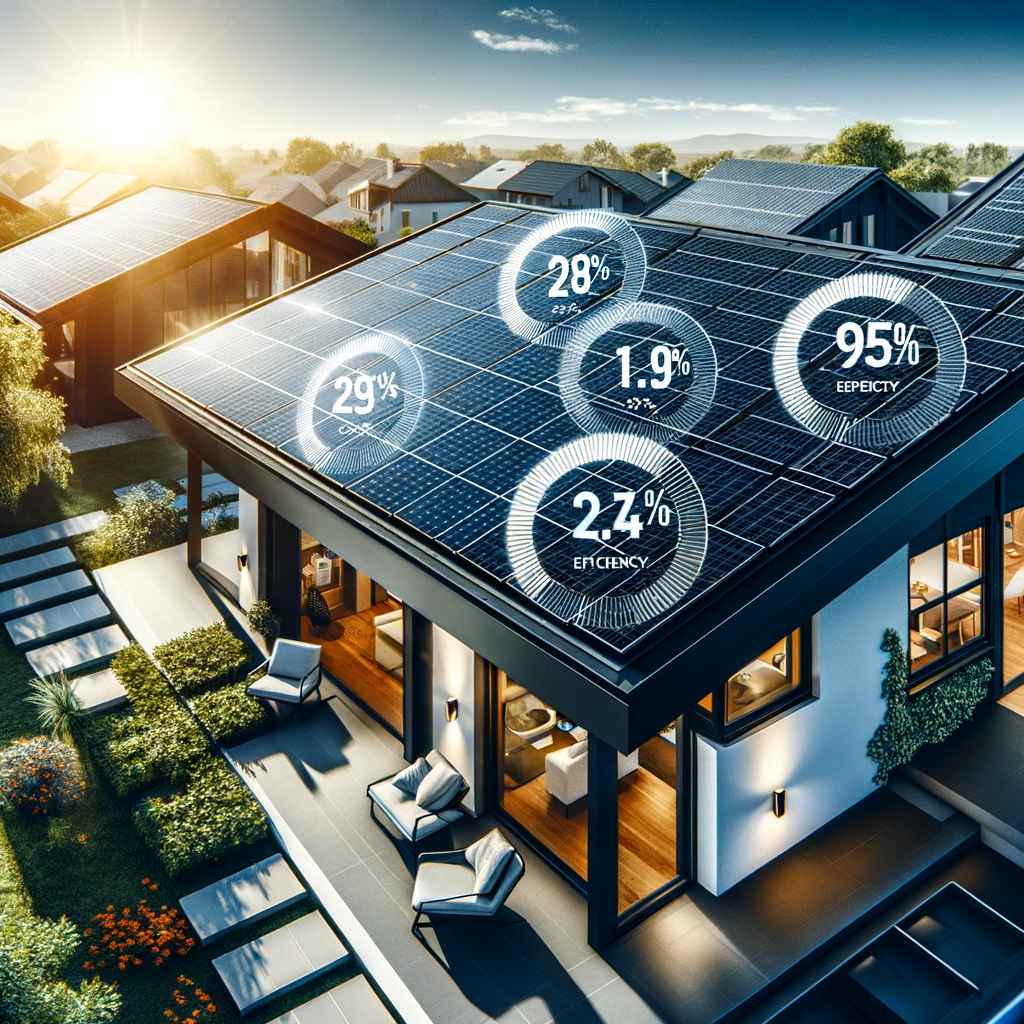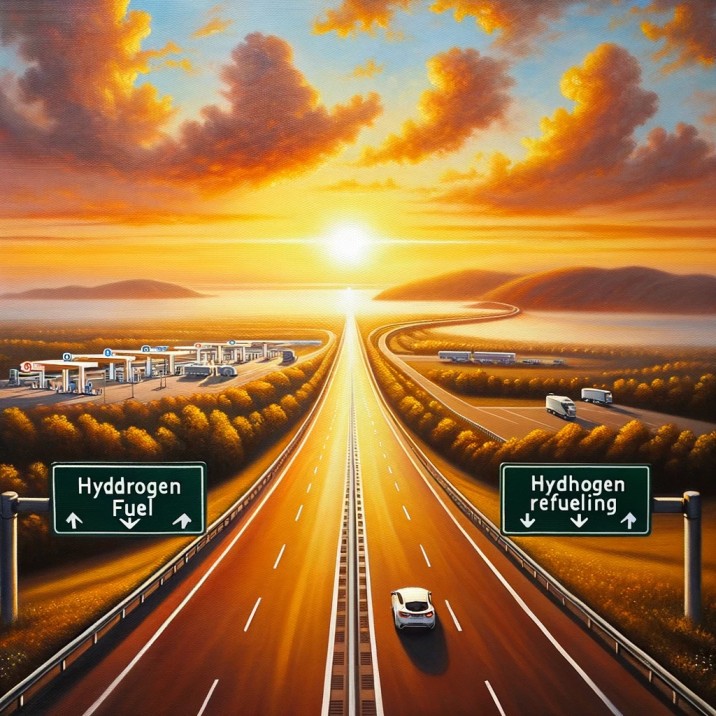Solar Power vs Traditional Energy Costs Comparison: Introduction
Solar power has become a popular alternative to traditional energy sources in recent years. As the world shifts towards a greener future, many are curious about the advantages and disadvantages of solar power compared to traditional energy sources. One of the most significant factors to consider is the cost. In this article, we will compare the costs of solar power and traditional energy sources to determine which is more cost-effective.

Solar power is a renewable energy source that harnesses the power of the sun to generate electricity. It is a clean and sustainable alternative to traditional energy sources such as coal, oil, and natural gas. While the initial investment in solar panels and equipment can be costly, the long-term benefits of solar power can outweigh the costs. In this article, we will provide an overview of solar power and its benefits, as well as compare its costs to those of traditional energy sources.
Key Takeaways
- Solar power is a renewable and sustainable alternative to traditional energy sources.
- While the initial investment in solar panels can be costly, the long-term benefits of solar power can outweigh the costs.
- Solar power is becoming increasingly cost-competitive with traditional energy sources.
Read More: How Solar Farms Work: Explaining Photovoltaic Power Stations
Overview of Solar Power

Solar power is a renewable energy source that has gained popularity in recent years due to its numerous benefits. This section will provide an overview of solar power, including its technology and efficiency, environmental impact, and market growth.
Technology and Efficiency
Solar power technology involves capturing the energy from the sun and converting it into usable electricity. This is done through the use of solar panels, which are made up of photovoltaic cells that convert sunlight into electrical energy. The efficiency of solar panels is measured by their ability to convert sunlight into electricity, and it varies depending on factors such as the type of panel and the amount of sunlight available.
In recent years, advancements in solar technology have led to increased efficiency and decreased costs. For example, the use of thin-film solar panels has made solar power more affordable and accessible, while the development of high-efficiency solar cells has increased the amount of electricity that can be generated from a single panel.
Environmental Impact
One of the main benefits of solar power is its positive impact on the environment. Unlike traditional energy sources, such as coal and natural gas, solar power does not produce harmful greenhouse gas emissions that contribute to climate change. Additionally, solar power does not require the use of water, which is often a scarce resource in many areas.
Market Growth
The market for solar power has grown significantly in recent years, with many countries and companies investing in renewable energy. In 2020, the global solar energy market was valued at $52.5 billion and is expected to continue growing in the coming years. This growth is due to a combination of factors, including increased demand for renewable energy, advancements in solar technology, and government incentives for solar power adoption.
Overall, solar power is an increasingly popular and viable alternative to traditional energy sources. Its technology and efficiency continue to improve, and its positive impact on the environment makes it an attractive option for individuals, businesses, and governments alike.
Overview of Traditional Energy

Sources and Reliability
Traditional energy sources include coal, natural gas, and oil. These sources have been relied upon for decades to power homes and businesses. They are generally reliable, with a consistent supply available for use. However, the cost of these resources can fluctuate due to market conditions and geopolitical events, leading to potential price volatility.
Environmental Concerns
The use of traditional energy sources has been linked to environmental concerns, including air pollution and greenhouse gas emissions. Burning fossil fuels releases harmful pollutants into the atmosphere, contributing to climate change and other environmental issues. Additionally, the extraction and transportation of these resources can have negative impacts on local ecosystems and communities.
Current Infrastructure
The current energy infrastructure is heavily reliant on traditional energy sources. Power plants and pipelines have been built to transport and distribute these resources throughout the country. While this infrastructure is well-established, it can be costly to maintain and upgrade. Additionally, the reliance on traditional energy sources can limit the development of renewable energy alternatives.
In summary, traditional energy sources have been relied upon for decades to power homes and businesses. While they are generally reliable, they have been linked to environmental concerns and can be costly to maintain and upgrade. The current infrastructure is heavily reliant on these sources, limiting the development of renewable energy alternatives.
Economic Analysis

Initial Investment
When it comes to solar power vs traditional energy costs, one of the main factors to consider is the initial investment required. Installing solar panels can be expensive, with costs varying depending on the size of the system and the complexity of the installation. However, the cost of solar panels has decreased significantly in recent years, making them more accessible to homeowners and businesses.
On the other hand, traditional energy sources such as coal and gas have lower initial costs, but require ongoing expenses for fuel and maintenance. In the long run, the initial investment in solar power can pay off through reduced energy bills and increased energy independence.
For help regarding Installation:
Error: Contact form not found.
Long-Term Savings
Solar power offers significant long-term savings compared to traditional energy sources. Once installed, solar panels require little maintenance and can generate electricity for up to 25 years or more. This means that homeowners and businesses can save money on energy bills for years to come.
In addition, the cost of traditional energy sources is subject to fluctuations in the market, making it difficult to predict future energy costs. Solar power, on the other hand, provides a stable and predictable source of energy, reducing the risk of energy price spikes.
Government Incentives
To encourage the adoption of solar power, many governments offer incentives and rebates for homeowners and businesses that install solar panels. These incentives can significantly reduce the initial investment required for solar power and make it a more attractive option for those looking to save money on energy costs.
In addition, some governments offer net metering programs, which allow homeowners and businesses to sell excess energy generated by their solar panels back to the grid. This can further reduce energy costs and provide a source of income for solar panel owners.
Overall, while solar power may require a higher initial investment, it offers significant long-term savings and the potential for government incentives. When comparing solar power vs traditional energy costs, it is important to consider the long-term benefits and potential cost savings of solar power.
Comparative Advantages

Energy Independence
One of the primary advantages of solar power over traditional energy sources is its ability to provide energy independence. Unlike traditional energy sources such as coal, oil, and gas, solar power does not rely on finite resources that are subject to depletion. Solar power systems generate electricity from sunlight, which is a renewable and virtually unlimited resource. This means that solar power systems can provide a reliable source of energy for homes, businesses, and communities, without the need for external sources of fuel.
Price Volatility
Another advantage of solar power is its relatively stable price compared to traditional energy sources. Traditional energy sources such as coal, oil, and gas are subject to price fluctuations due to changes in supply and demand, geopolitical events, and other factors. In contrast, the cost of solar power has been steadily decreasing over the past decade, due to advances in technology and manufacturing processes. This means that solar power can provide a cost-effective and stable source of energy for homes, businesses, and communities, even in the face of price volatility in traditional energy markets.
Scalability
Finally, solar power offers scalability advantages over traditional energy sources. Solar power systems can be designed to meet the specific energy needs of homes, businesses, and communities, from small residential systems to large-scale commercial installations. This means that solar power can be easily scaled up or down to meet changing energy demands, without the need for costly infrastructure upgrades or changes in fuel sources. Additionally, solar power systems can be deployed in remote or off-grid locations, where traditional energy sources may not be available or practical.
In summary, solar power offers several comparative advantages over traditional energy sources, including energy independence, price stability, and scalability. These advantages make solar power an increasingly attractive option for homes, businesses, and communities looking to reduce their reliance on traditional energy sources and transition to a more sustainable energy future.
Challenges and Considerations

Installation Complexity
One of the challenges of installing solar power systems is the complexity of the installation process. Unlike traditional energy sources, solar power requires a specialized installation process that involves mounting solar panels on rooftops or in open fields. This can be a time-consuming process that requires skilled professionals to ensure that the panels are installed correctly and safely.
Geographical Limitations
Another challenge of solar power is its geographical limitations. Solar power systems require a significant amount of sunlight to generate electricity, which means that they are not suitable for all locations. Areas with frequent cloud cover or limited sunlight may not be able to generate enough electricity to make solar power a viable option.
Maintenance Requirements
Solar power systems also require regular maintenance to ensure that they continue to function properly. This can include cleaning the solar panels to remove dirt and debris, as well as checking the wiring and connections to ensure that everything is working correctly. While maintenance requirements are relatively low, they do add an additional cost to the overall cost of solar power.
Overall, while solar power systems offer many benefits, they also come with some challenges and considerations that must be taken into account. By understanding these challenges, individuals and businesses can make informed decisions about whether solar power is the right choice for their energy needs.
Frequently Asked Questions

How do the long-term costs of installing solar panels compare to ongoing traditional energy expenses?
The long-term costs of installing solar panels are generally lower than ongoing traditional energy expenses. While the initial investment for solar panels may be higher, once installed, they require minimal maintenance and have a lifespan of up to 25 years. This means that over time, the cost of solar energy is significantly lower than that of traditional energy sources.
What are the initial investment requirements for solar power compared to traditional energy sources?
The initial investment for solar power is generally higher than that of traditional energy sources. However, the cost of solar panels has been decreasing in recent years, making it more accessible to homeowners. Additionally, there are various financing options available to help offset the initial investment.
How do maintenance costs for solar energy systems stack up against those for conventional energy?
Maintenance costs for solar energy systems are generally lower than those for conventional energy. Solar panels require minimal maintenance and have a lifespan of up to 25 years. In contrast, conventional energy sources require ongoing maintenance and repairs.
What is the average payback period for residential solar installations versus traditional energy reliance?
The average payback period for residential solar installations varies depending on various factors such as location, energy usage, and financing options. However, on average, it takes between 5 to 10 years for homeowners to recoup the initial investment in solar panels. In contrast, traditional energy reliance continues to incur ongoing expenses without any payback.
How does the efficiency and cost-effectiveness of solar energy compare to that of fossil fuels over time?
Solar energy is becoming increasingly cost-effective and efficient compared to fossil fuels over time. As technology improves, the efficiency of solar panels continues to increase, making it a more viable option for homeowners. Additionally, the cost of solar panels has been decreasing in recent years, making it a more affordable option.
What financial incentives are available for solar power adoption, and how do they affect the overall cost comparison with traditional energy?
There are various financial incentives available for solar power adoption, such as tax credits, rebates, and net metering. These incentives can significantly reduce the initial investment and ongoing costs of solar energy, making it a more cost-effective option compared to traditional energy sources.















